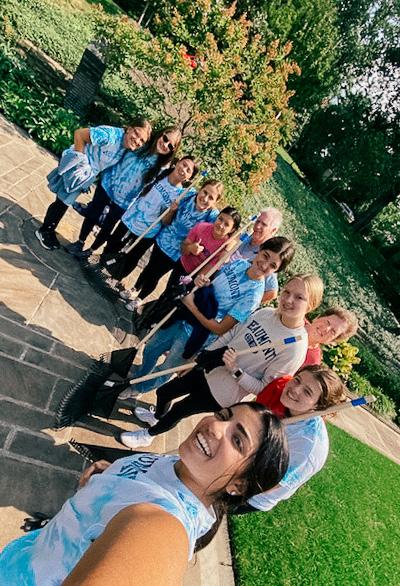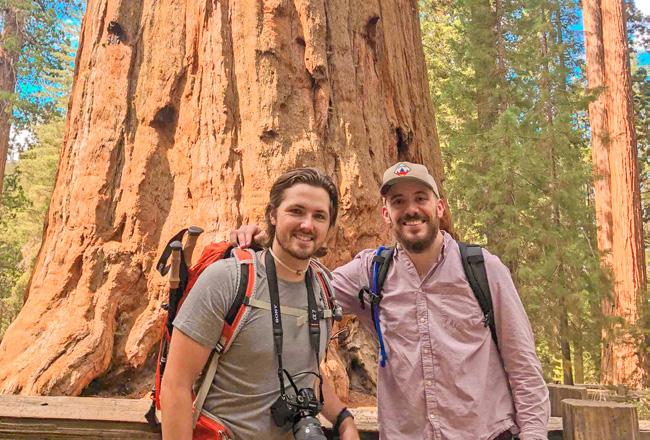
7 minute read
At the Foot of the Sequoias
By Mitchell Dunbar
Walk through the ARV workshop and you’re bound to hear Rick’s classic rock music serenading the floor. He’ll play the music at his own work station or throw the speaker on the back of his bicycle and bring it to you. For the past eight years, Rick has brought his calm and focused problem-solving to custom plumbing.
Proudly displayed at his desk - a picture of a classic green Volkswagen Bus with a popup tent on top. It’s the bus Rick’s father brought to their New Jersey family home in 1964, when Rick was 11 years old. That summer, six of them packed into that bus and set off for a journey across America.
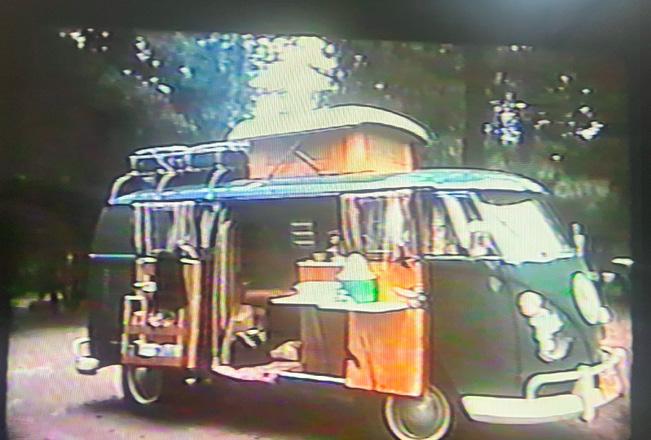
The Volkswagen saw practically every state, passing through the Grand Canyon and mesas of the southwest, the mighty Redwoods of the west coast, and the big skies of Yellowstone and the Dakotas. They’d stay in campgrounds, parks, and, in 1960’s fashion, pull off the interstate to sleep right on the highway. His father recorded the entire adventure on film for them to look back on.
For Rick in particular, it is still easy to transport himself back to his 11 year old self and feel it all over again. At that age, Rick was already an experienced camper, but he was unprepared for the scale and beauty of what he saw. He remembers how the Grand Canyon looked impossibly more grand than any photo he’d ever seen of it; he remembers his father driving the Volkswagen through the titanic roots of the redwood trees, trees you can’t find in New Jersey; he remembers the sights and sounds of that bus rolling down the road, without air conditioning or FM radio, as his mother read the six of them a story about a wild west bronco. Rick is 68 now, and the memory remains.
When I heard of the Irish realm of Tir na nÓg, I was struck by its transcendence. While we may never travel the golden path to this mythical land of eternal youth and joy, I believe there are moments in all our lives where we enter a similar space, experiencing the journeys, emotions, and beauties that connect humanity across time.
I took a couple cross-country road trips around 2020, 54 years after Rick’s. These adventures connect me not just with Rick, but my father, who traveled the country in an 80’s Mustang., and we are connected to anyone who has ever felt the same wonder and awe from such travels. Instead of a Volkswagen bus and a family of six, or a Mustang and hometown buddies, it was a Sprinter van and my friend, Griffin.

Like Rick in 1964, we, too, had never seen a mighty redwood tree. Griffin and I had heard stories of the California Sequoia, but nothing could have prepared us for seeing one for the first time. It was spiritual, proof that miracles were real. Standing in the ageless forest, witnessing this great tree, I could’ve been Rick; I could’ve been my father; I could’ve been anyone who has ever felt childlike awe for nature’s impossible architecture.
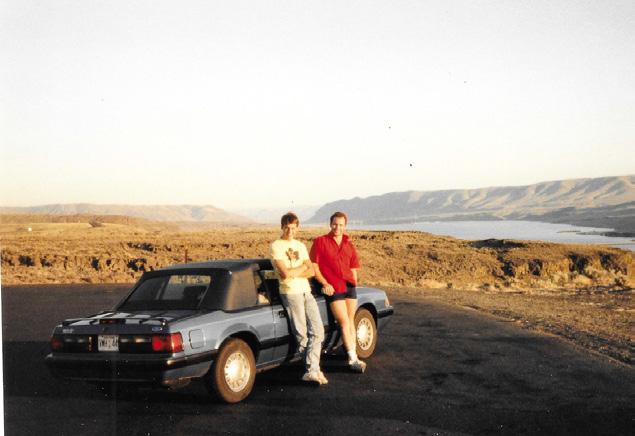
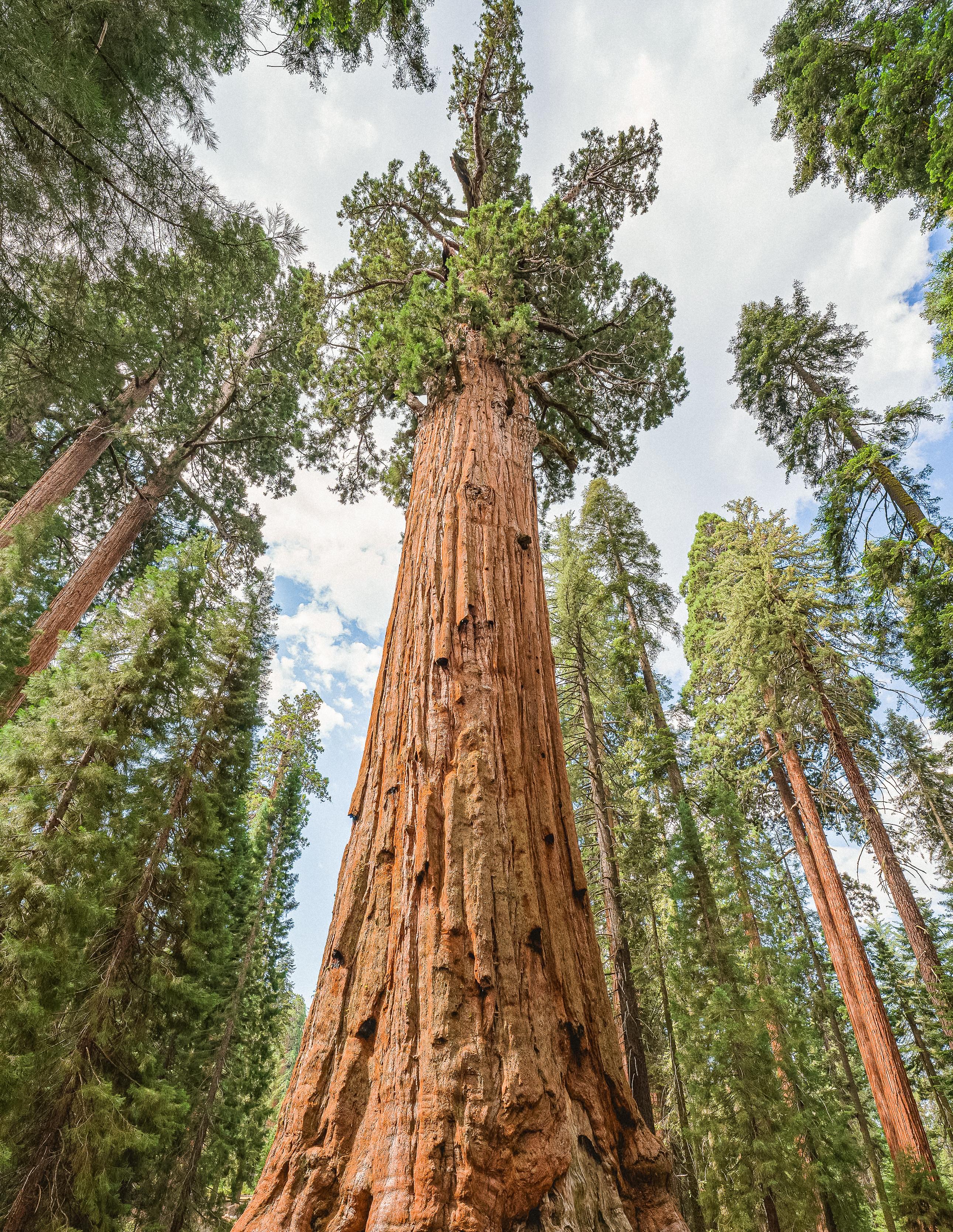
Iwiped the sweat from my brow as I surveyed the work in progress. As a volunteer with the Cleveland Cultural Gardens and, in particular, the Irish Garden, I had agreed to be at the Gardens on a day that felt as hot and humid as July, but was actually mid-September. I was supervising a group of teen girls who were here to fulfill a requirement for their high school’s All-School Service Day. Their duties included pulling weeds, raking leaves, collecting litter and other general clean-up chores.
The teens were a joyous bunch, happy to be released from academics for the day. The garden was soon filled with their chatter and laughter. We divided them into smaller groups, assigning tasks to each, and handing out tools. They tackled their duties with gusto.
I quickly realized that I needed to keep a close eye on the weeders since their enthusiasm seemed to clash with their lack of gardening knowledge. It became obvious that some of the workers were mildly confused about what was a weed and what was not. More than a few perennial plants were sacrificed that day.
As the work progressed, I suddenly heard the voice of one student sing out the opening line to a popular song. The others joined in, with the gushing fountain providing background rhythm for their impromptu chorus. After the final verse of the song, there were high-fives and high spirits all around.
For anyone not familiar, the Irish Garden is part of a unique collection of gardens known as the Cleveland Cultural Gardens. The Gardens are located on Cleveland’s east side, and span a two-mile stretch of land on Martin Luther King Jr. Blvd. and East Blvd. Originating in 1916 as part of Rockefeller Park (over 275 acres of green space owned by the City of Cleveland), the Gardens are a tribute to the ethnic groups who contributed to the heritage and history of Cleveland. There are currently 42 established and “in process” gardens, each with a sign and a flag of the nation or culture it represents. They are artfully landscaped with trees, shrubs and flowers that are native to that particular country. Oversight of the Cultural Gardens is handled by the Cleveland Cultural Gardens Federation, a non-profit umbrella group that preserves and promotes the gardens.
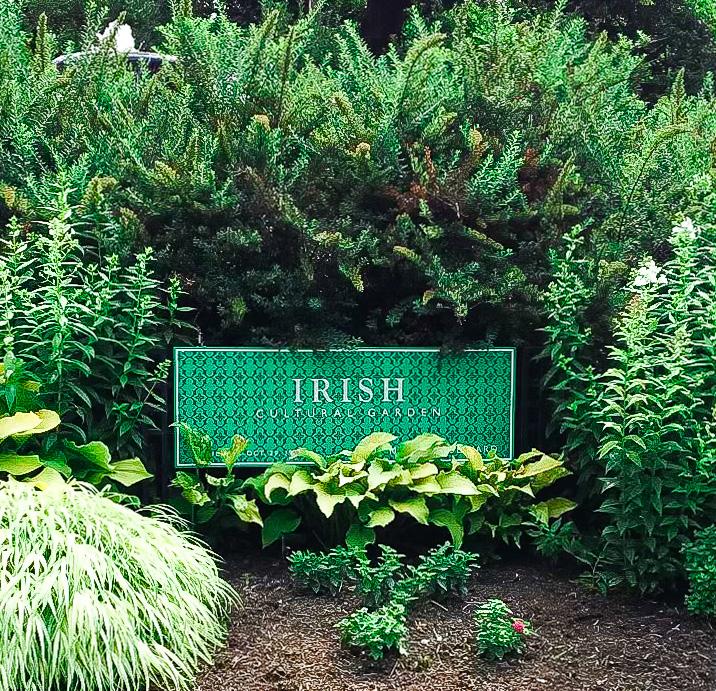
Most people who live in the Cleveland area have driven past the Cleveland Cultural Gardens at one time or another, probably on their way to University Circle museums or to places like Cleveland Clinic or University Hospital. From the car window, it is easy to spot some of the statues, fountains and monuments that are featured. But the best way to enjoy the gardens is to stroll through them on foot, to see the cultural elements that make each garden a valued treasure. Whether walking or driving, be sure to take note of the four iconic, arched bridges that reside at intervals along the boulevard. Quite massive and made of stone and concrete, they were designed by Charles Schweinfurth, Cleveland’s premier architect in the early 20th century.
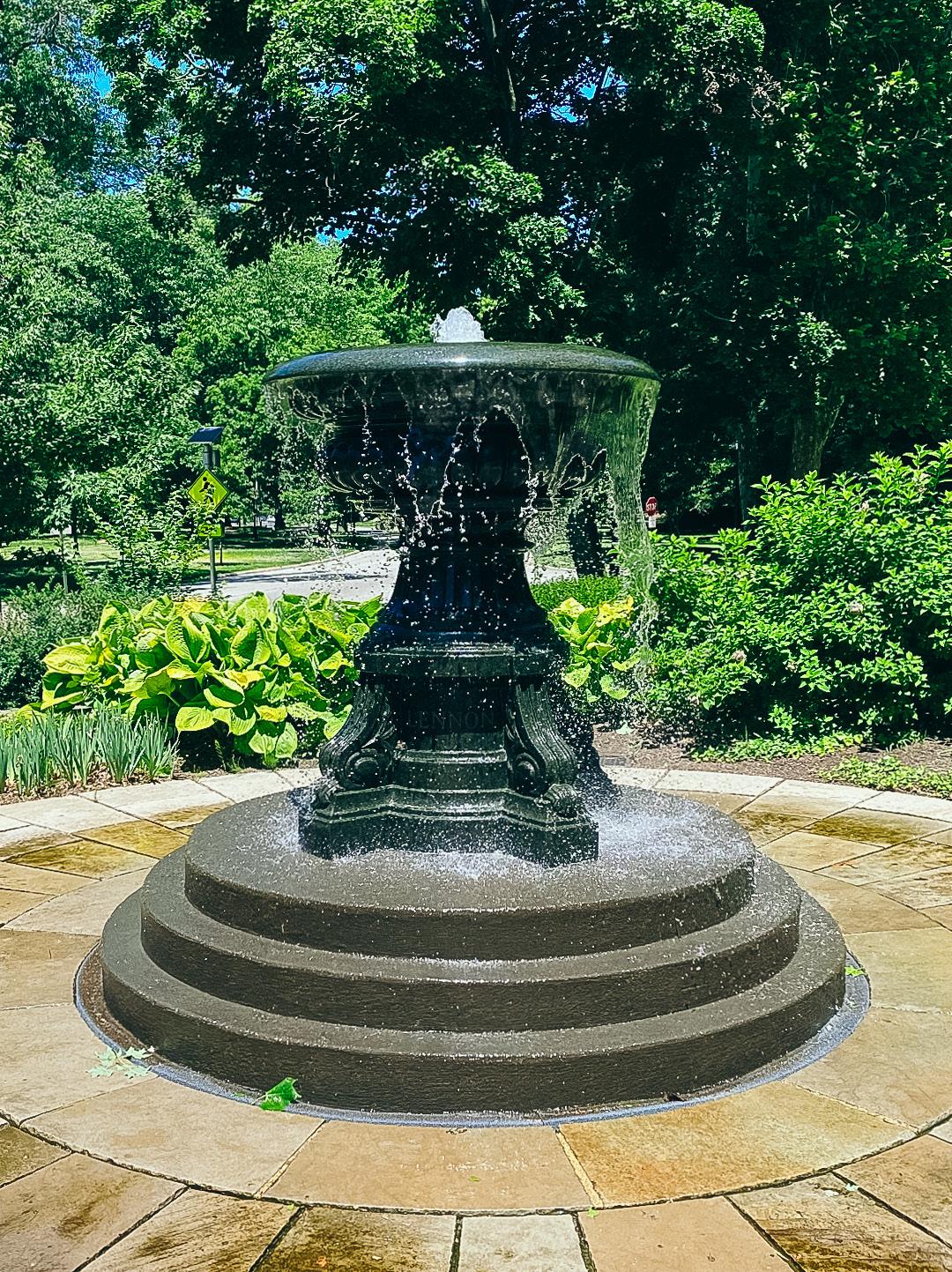
Although all the gardens are special, the Irish Garden is, of course, my favorite. My Irish heritage is well-represented in the design and features of this garden. It was designed in 1936 by noted landscape architect, Donald Gray, and dedicated on October 29, 1939. The dedication stone from that year, engraved in Gaelic, proclaims: “For the greater glory of God and Ireland.” The main feature of the garden at that time was a sandstone walkway in the shape of a large Celtic cross. The original plantings included Irish blackthorn, the wood of which is prized for making shillelaghs. If you are not familiar with the term, a shillelagh is a walking stick with a large knob on top, made from blackthorn, and can be seen in the familiar logo of the Boston Celtics – a leprechaun leaning on his shillelagh.
As with all things outdoors, Father
Time and Mother Nature conspired against the Irish Garden, and deterioration took place over many decades. Unfortunately, neglect and vandalism also played a part in the sad decline of all the gardens. But thanks to the efforts of a group of 14 enthusiastic founders, the Irish Garden Club was created in 2007 to provide capital funding for the restoration of the garden. Led by Cleveland businessman Edward Crawford, who later became the U.S. Ambassador to the Republic of Ireland (2019-2021), the group held meetings, raised funds, retained landscape architects and master gardeners and used their connections to get the project “off the ground.” On October 3, 2009, a re-dedication event was held for the refurbished Irish Garden. A symbolic ribboncutting ceremony heralded the rebirth of this beautiful four-acre space. The large crowd onhand was able to get their first view of the new plantings, which included maples, hawthorns, magnolias, lilacs, roses, boxwood and colorful perennials. A Writers Recognition Court was also added, with black granite pillars honoring James Joyce, George Bernard Shaw, William Butler Yeats and other renowned Irish authors.
In 2010, the grand finale of the restoration plan was orchestrated. At the north end of the garden, a fountain plaza was created and an exact replica of the iconic fountain at St. Patrick’s Cathedral in Dublin, Ireland was installed. Our fountain is dedicated to the memory of Fred Lennon (1905-1998), another prominent Cleveland businessman and philanthropist. The Lennon Fountain was the final piece for the rejuvenation of the garden. Under the leadership of Mr. Crawford, our beloved Irish Garden had been returned to its former glory, but with additional features that enhanced the space in a new, wonderful way.
The ongoing maintenance of the Irish Garden is now up to the members of the Irish community in the Cleveland area. Thankfully, the heavy work of mowing, tree trimming, lighting and security is assumed by the City of Cleveland. But the basic care and routine chores are handled by willing volunteers. We meet on Saturday mornings, when summoned by our captain, and hustle to get the weeding, raking and planting done by noon. We are a small but mighty work crew. We are volunteers who are motivated by the Garden’s beauty and our appreciation of all things Irish, with a nod to the generations of Irish who came to Cleveland before us.
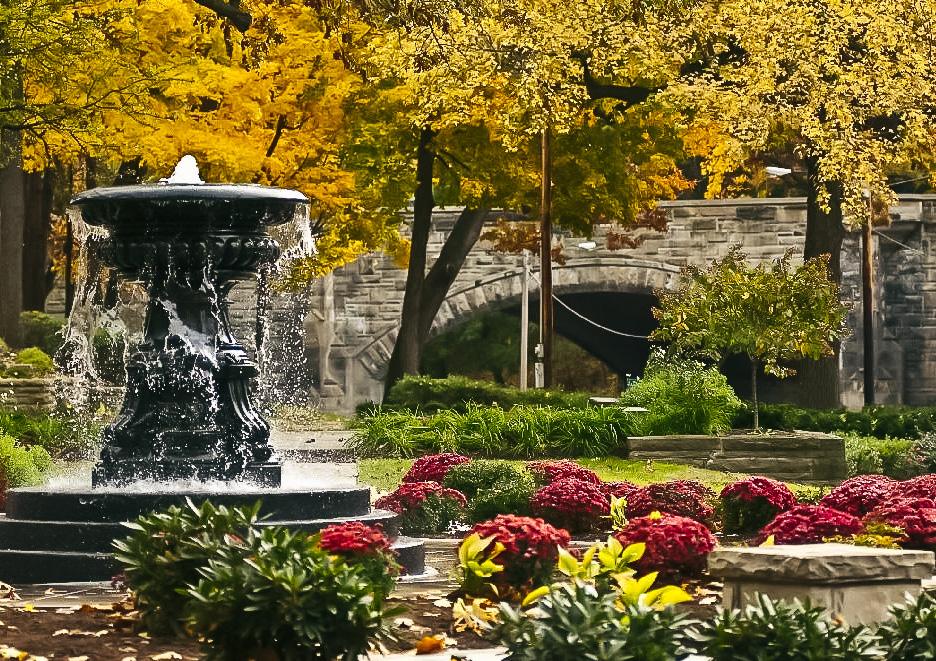
I love being a part of something that is admired and treasured by so many people. There is not another place in the world like the Cleveland Cultural Gardens. It is no wonder that they have earned a listing on the “National Register of Historic Places.” The motto of the Cleveland Cultural Garden Federation is “peace through mutual understanding.” What better way to fulfill that mission than by starting with our youth, the future leaders of tomorrow?
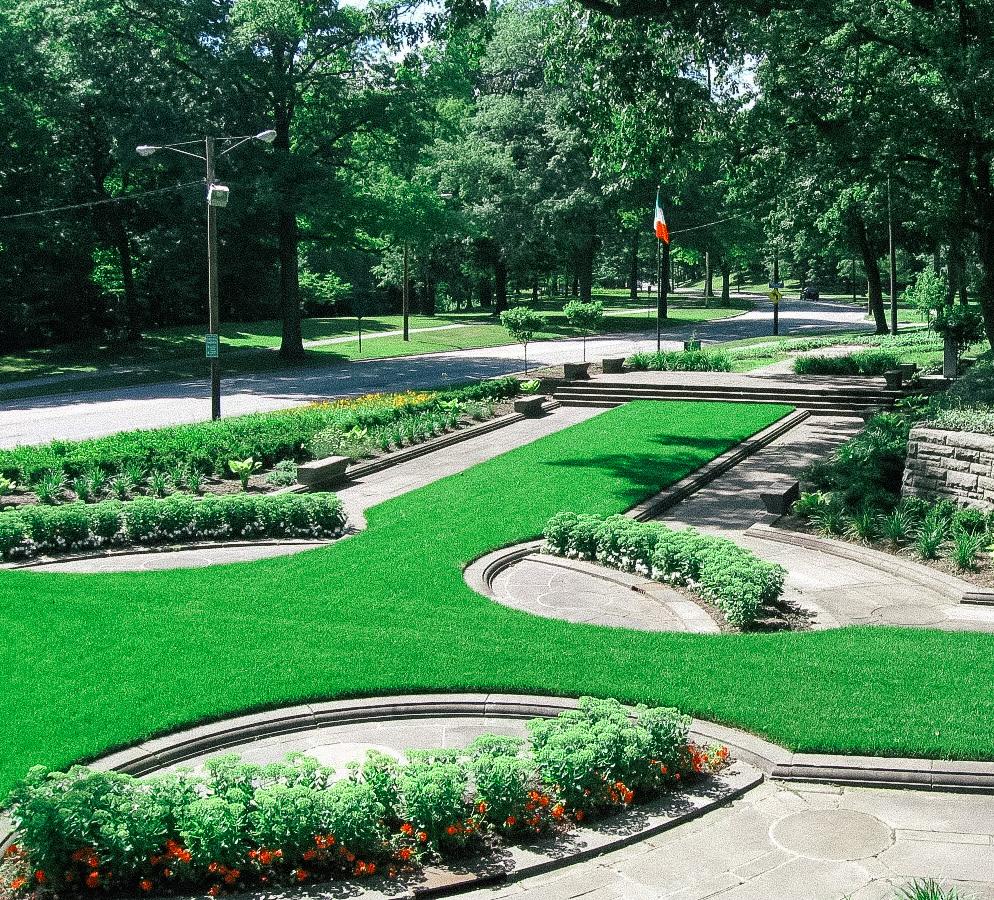
After about two hours, I checked my watch and announced that it was time for the teens to move on to the next mission on their Service Day agenda. Bags of weeds and leaves were collected and tools were surrendered. Blisters were compared and dirty, scraped knees were scrutinized. The essential group selfie was taken. Their work here was done. Thanks to the magic of these young fairies, the Irish Garden was better for it. Teaching teens the value of volunteering, the reward of hard work and appreciation of the cultures of other countries is a first step. I can only hope that at the end of the day, the students I supervised in the Irish Garden took pride in their blisters and scraped knees. As the saying goes, “no pain, no gain.” In this case, a little pain brought some beauty and order to one of my favorite places: the Irish Garden. And that, my friends, is a big gain.
